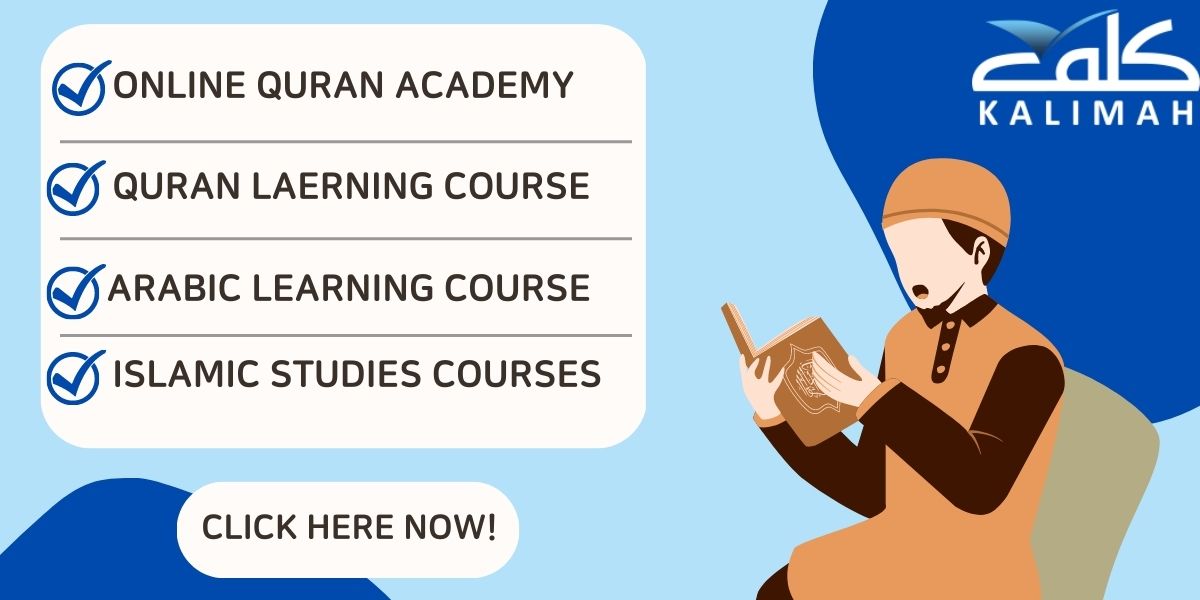In a nutshell: Do you want to learn Arabic Through the Quran? Unlock the secrets of Arabic with the Quran as your guide! Dive into the language by exploring its alphabet, pronunciation, and grammar through the verses of this sacred text. With creative techniques and resources, you’ll transform your learning journey, blending linguistic mastery with spiritual connection. Let the Quran be your key to fluency and deeper understanding.
As a native Arabic speaker, I understand the challenges of learning Arabic, especially its unique alphabet, pronunciation, and grammar. But what if I told you the Quran could be your key to solve these complexities?
In this article, we’ll explore creative techniques to learn the Arabic alphabet, pronunciation, grammar, and vocabulary directly from the Quran, transforming your Arabic learning journey.
I will show you the best ways with examples from the Quran. You will learn additional ways and how to use them to learn Arabic through and from the Quran, like learning to fish instead of just getting one fish.
Is it Possible to Learn Arabic through the Quran?
Yes, in sha Allah (God willing), it’s possible to learn Arabic through the Quran! It takes some good ways (techniques) to learn best.
The Quran can teach you Arabic. This means you can learn new words and grammar from the Quran, but you also learn how to find more words and understand the language better.
So, open your Quran and start your journey. With some good ways and effort, you can learn fusha Arabic and understand the beautiful words of Allah (swt).
May Allah (swt) make it easy for all of us!

1. Learn the Arabic Alphabet Through the Quran
As-salamu alaykum, dear students! Bismillah, let’s begin our beautiful journey of learning Arabic through the Quran. Our first step is to get to know the Arabic letters, the building blocks of this amazing language.
Arabic letters are written from right to left. Yes, the opposite of English! We have 28 main letters in our alphabet, but some letters can change shape depending on where they are in a word – beginning, middle, or end.
Don’t worry, you don’t need to learn fancy calligraphy right away. Just focus on recognizing the letters in their printed form, like you see in the Quran.
Exercises to Get You Started:
1. Look at the following Arabic alphabet chart. Try to say the names of the letters out loud.
2. Then, open a Mushaf to any page and try to spot letters you recognize from the chart. As you encounter verses in the Quran, try to identify the letters you’ve learned.
Arabic has 28 letters, and it is written from right to left. Here’s a brief introduction:
| Letter | Name | Example in Quran |
| ا | Alif | الرحمن (Ar-Rahman) |
| ب | Ba | بسم (Bism) |
| ت | Ta | التين (At-Teen) |
| ث | Tha | ثمرات (Thamarat) |
| ج | Jeem | جنة (Jannah) |
| ح | Ha | الحمد (Hamd) |
| خ | Kha | خالدين (Khalideen) |
3. You can practice how to write each letter with this playlist we’ve prepared for you on our YouTube channel Kalimah4Arabic.
2. Learn Pronunciation of Arabic with the Quran
You know, to speak Arabic beautifully, like the language of the Quran, we must learn its special sounds. It’s like learning a secret code! Some sounds, like the “ع” (Ayn) and the “غ” (Ghayn), are not found in English. They’re unique to Arabic.
The “ع” (Ayn) is a sound from deep in your throat. Listen to the word “عِندَ” (einda) in Surah Al-Baqarah (2:62), meaning “towards.” Hear that special sound in the beginning? That’s the Ayn!
And here is a video on our Youtube channel that teaches you how to correctly pronounce the Arabic letter ع (ayn) in the opening verse of the Quran, “الْحَمْدُ لِلَّهِ رَبِّ الْعَالَمِينَ” (al-hamdu lillahi rabbil-ʿālamīn) (Al-Fatiha 1:2) The letter ع is a difficult sound for non-native Arabic speakers to master, as it is a deep guttural sound that does not exist in many other languages. By practicing along with the video, viewers can learn to pronounce this letter correctly and improve their overall Arabic pronunciation.
The “غ” (Ghayn) is also from the throat, but a bit different. It’s like a soft gargle. Listen to the word “غَفُورٌ” (ghafoorun) in Surah Al-Baqarah (2:192), meaning “forgiving”. That gentle rumble is the Ghayn!
To practice, listen closely to Quran recitations. The reciters are experts, such as shaykh Mahmoud Khalil Al-Husary or shaykh Muhammad Siddiq Al-Minshawi. Listen how they make these sounds smoothly and beautifully. Then, try to imitate them. It takes time, but with practice, you’ll be reciting well, in sha Allah!
– Here is an audio recording we offer at Kalimah for the Arabic alphabet. Listen and try to imitate the sounds.
Check An Audio
3. Learn Grammar of Arabic with the Quran
After the beautiful sounds of Arabic, let’s move on to the building blocks of language – grammar. Don’t worry, we won’t get too technical. We’ll just focus on the basics, enough to help you understand how to learn grammar through the Quran.
A. Nouns and Gender:
In Arabic, every noun has a gender – either masculine or feminine. This might seem strange at first, but it’s like giving each word a special personality.
For example, the word “كتاب” (kitab) meaning “book” is masculine, while “سورة” (surah) meaning “chapter” is feminine. You can often spot feminine nouns by their “ة” (taa marbutah) ending, like in “رحمة” (rahmah) meaning “mercy” in Surah Al-Baqarah (2:157).
B. Definite Article:
Speaking of definite articles, the Arabic equivalent of “the” is “ال” (al). It plays a big role in telling us whether we’re talking about a specific thing or just anything.
In Surah Al-Baqarah (2:2), we find the words “ذَٰلِكَ الْكِتَابُ” (dhalika al-kitabu) meaning “That is the Book.” Notice how “الكتاب” (al-kitabu) has the definite article “ال” (al) added to the beginning, showing us it is a specific book – the Quran.
In Surah Al-Fatihah (1:2), we begin with “الْحَمْدُ لِلَّهِ” (al-hamdu lillahi) meaning “All praise is due to Allah.” The “ال” (al) at the beginning of “الحمد” (al-hamdu) shows us we’re talking about all praise, not just some praise.
C. Verb Conjugation:
Arabic verbs change their form depending on who’s doing the action, when the action happened, and whether the action is a statement or a command.
For example, the verb “قرأ” (qara’a) means “to read.” But its form changes if we say “he read” (“قرأ”), “they read” (“قرأوا”), or “read!” (“اقرأ”).
In Surah Al-‘Alaq (96:1), Allah commands the Prophet Muhammad (peace be upon him) to “اقرأ” (iqra’) which means “Read!” Notice how the verb is in the command form, giving it a powerful and direct tone.
These are just a few basic grammar rules to get you started. As you read the Quran, try to identify these patterns. Don’t worry if you don’t understand everything at first. Just like learning any new skill, it takes time and practice.
To strengthen your foundation in Arabic grammar, I invite you to explore the valuable resource offered by the Kalimah Center:
Droos nahwiyah mena Al Moqaddemah Al AAjourromiyah (PDF) – دروس نحوية من المقدمة الآجرومية
This book, based on the renowned Ajurrumiyyah, offers clear and concise explanations of essential grammatical concepts.
You are invited to explore our book shop.
4. Learn Vocabulary with the Quran
Alhamdulillah, we’re moving on to another exciting step in our Quranic Arabic learning journey: building our vocabulary!
Let’s start with some words that you’ll find repeated throughout the Quran:
- سماء (samaa’): This means “sky” or “heaven.” When you look up at the vastness of the sky, remember this word and marvel at Allah’s creation.
For example, in Surah Al-Baqarah (2:22), it says,
“الَّذِي جَعَلَ لَكُمُ الْأَرْضَ فِرَاشًا وَالسَّمَاءَ بِنَاءً وَأَنزَلَ مِنَ السَّمَاءِ مَاءً فَأَخْرَجَ بِهِ مِنَ الثَّمَرَاتِ رِزْقًا لَّكُمْ ۖ فَلَا تَجْعَلُوا لِلَّهِ أَندَادًا وَأَنتُمْ تَعْلَمُونَ”
“[He] who made for you the earth a bed [spread out] and the sky a ceiling and sent down from the sky, rain and brought forth thereby fruits as provision for you. So do not attribute to Allah equals while you know [that there is nothing similar to Him].”
- أرض (ard): This means “earth.” It’s the ground we walk on, the place where Allah has provided for us. In Surah Ar-Rahman (55:10), it says,
“وَالْأَرْضَ وَضَعَهَا لِلْأَنَامِ”
“And the earth He laid [out] for the creatures.”
- نبي (nabiyy): This means “prophet.”Throughout the Quran, we learn about the stories of many prophets, like Noah, Abraham, Moses, and Jesus (peace be upon them all). In Surah Al-Ahzab (33:53), it says,
“يا أَيُّهَا الَّذِينَ آمَنُوا لَا تَدْخُلُوا بُيُوتَ النَّبِيِّ إِلَّا أَن يُؤْذَنَ لَكُمْ إِلَىٰ طَعَامٍ غَيْرَ نَاظِرِينَ إِنَاهُ”
“O you who have believed, do not enter the houses of the Prophet except when you are permitted for a meal, without awaiting its readiness.”
Now, let’s explore some words related to actions:
- صلى (salla): This means “to pray.” It’s one of the five pillars of Islam, and it’s a way we connect with Allah. In Surah Al-Baqarah (2:45), it says, “And seek help through patience and prayer.”
- صوم (sawm): This means “to fast.” During the month of Ramadan, we fast from dawn till dusk, a practice that teaches us discipline and empathy. In Surah Al-Baqarah (2:183), it says, “O you who have believed, decreed upon you is fasting as it was decreed upon those before you that you may become righteous.”
- زكى (zakah): This means “to purify.” It refers to the act of giving a portion of our wealth to the needy, an act that purifies our hearts and our wealth. In Surah At-Tawbah (9:103), it says, “Take, [O, Muhammad], from their wealth a charity by which you purify them and cause them increase, and invoke [Allah ‘s blessings] upon them.”
So, as you read the Quran pay attention to words you don’t know. Look them up in a dictionary, or ask your teacher or Imam. Try to understand how they fit into the overall message of the verse.
For example, in Surah Al-Baqarah (2:186), Allah says:
“وَإِذَا سَأَلَكَ عِبَادِي عَنِّي فَإِنِّي قَرِيبٌ أُجِيبُ دَعْوَةَ الدَّاعِ إِذَا دَعَانِ فَلْيَسْتَجِيبُوا لِي وَلْيُؤْمِنُوا بِي لَعَلَّهُمْ يَرْشُدُونَ”
You might notice the words “عبادي” (Eibadi – My servants), “قريب” (Qareeb – near), and “دعوة” (Da’wa – supplication).
Write down these new words and their meanings.
5. Other Practical Exercises to Learn Arabic through Quran
A. Identifying Root Words
Morphology, or Sarf, is the study of how words are formed and altered in Arabic. Understanding Sarf is crucial for mastering Quranic Arabic.
- Select a verse from the Quran.
- Identify the root words of significant terms.
- Write down the root words and their meanings.
- Example: Surah Al-Fatihah (1:1)
“الْحَمْدُ لِلَّهِ رَبِّ الْعَالَمِينَ” (Alhamdulillahi Rabbil ‘alamin) – “Praise be to Allah, the Lord of the Worlds.”
Root: ح م د (ha-ma-da)
Meaning: praise, thanks
B. Enhancing Arabic Reading and Comprehension through Quran
Objective: To improve Arabic reading skills and comprehension of Quranic Arabic.
- Example: Read a short Surah from the Quran and summarize its meaning.
- For instance: Surah Al-Ikhlas (Surah 112)
( قُلْ هُوَ ٱللَّهُ أَحَدٌ ٱللَّهُ ٱلصَّمَدُ لَمْ يَلِدْ وَلَمْ يُولَدْ وَلَمْ يَكُن لَّهُۥ كُفُوًا أَحَدٌۢ)
(Qul huwa Allāhu ‘aḥad. Allāhuṣ-ṣamad. Lam yalid wa lam yūlad. Wa lam yakun lahu kufuwan ‘aḥad.)
(Say, “He is Allah, [who is] One, Allah, the Eternal Refuge. He neither begets nor is born, nor is there to Him any equivalent.)
- Exercise: Listen to it from an experienced reciter such as Mahmoud Khalil Al-Husary or shaykh Muhammad Siddiq Al-Minshawi, and imitate them while you are reading from a Mushaf to link sounds with shapes of letters and words.
C. Enhancing Arabic Writing and Composition through Quran
Writing out verses helps reinforce your learning, while recitation improves your pronunciation and fluency.
Exercise: Write out Surah Al-Ikhlas (Surah 112) ten times and recite it aloud. Focus on correct pronunciation and tajweed (rules of Quranic recitation).
D. Learning Arabic through Tafsir (Advanced)
Classical Tafsir books, such as those by Ibn Kathir or Al-Tabari, provide detailed explanations of the Quranic verses, including linguistic insights.
Choose a well-known Tafsir (such as Tafsir Ibn Kathir) and study the explanations of your chosen verses. Pay attention to the linguistic nuances explained by the scholars.
Modern Tafsir books (such as Tafsir Al-Jalalayn) and online resources often provide simplified explanations suitable for beginners.
Use modern Tafsir resources to understand the broader meanings and implications of the verses you study.
“Arabic Through the Qur’an” by Alan Jones: a Valuable Resource
The book “Arabic Through the Qur’an” by Alan Jones is a grammar book that aims to teach readers enough Arabic to understand the Qur’an in its original language. It is published by The Islamic Texts Society and is designed for self-study.
The book comprises 40 lessons that progressively cover essential grammatical concepts in Quranic Arabic. It starts with the Arabic alphabet and then delves into nouns, adjectives, plurals, and verb conjugations. The book emphasizes the importance of understanding the context and meaning of words and phrases within the Qur’an.
Key features of the book include:
- Quranic focus: The book uses Quranic examples and exercises to illustrate grammatical points, making it relevant for those interested in the religious text.
- Comprehensive coverage: It covers a wide range of grammatical topics, providing a solid foundation for reading and understanding Quranic Arabic.
- Clear explanations: The grammatical explanations are presented in a clear and concise manner, making them accessible to beginners.
- Vocabulary lists: Each lesson includes a vocabulary list of relevant words and their different forms, aiding memorization and comprehension.
- Exercises and key: The exercises allow readers to practice the concepts learned, and the key provides answers for self-assessment.
While the book primarily focuses on Quranic Arabic, it also acknowledges the broader context of classical and later Arabic grammar, highlighting similarities and differences. The author occasionally uses non-Quranic examples to supplement explanations where Quranic examples are scarce.
Overall, “Arabic Through the Qur’an” is a valuable resource for individuals seeking to learn Arabic specifically for understanding the Qur’an. Its structured approach, clear explanations, and focus on Quranic context make it an effective tool for self-study.
Alternative Ways to Learn Quranic Arabic:
1. YouTube Channels:
- Lqtoronto Support: Comprehensive lessons by Brother Asif Meherali.
- Kalimah4Arabic: Engaging content and interactive learning.
- Dream Big 23: Focus on Quranic Arabic grammar by Nouman Ali Khan.
- Arabic Enthusiasts: Lessons from Madinah Arabic and Bayna Yadayk books.
- Islamic Reminders Channel: Sequential lessons and motivational reminders.
2. Free Books:
- Madinah Arabic Books: Comprehensive curriculum for all levels.
- Learning Arabic Language of the Quran: Focus on Quranic examples.
- Learning Quranic Arabic for Complete Beginners: Beginner-friendly guide.
- An Introduction to Koranic and Classical Arabic: Elementary grammar book.
- At-Tibyan Book: Focus on reading comprehension.
3. Private Tutoring
- One-on-One Lessons: Personalized instruction with a private tutor.
Consider Kalimah Center’s free trial sessions to experience their structured curriculum and high-quality instruction before committing financially.
- Group Tutoring: Collaborative learning in small groups.
Opt for Kalimah Center’s affordable group sessions for a collaborative learning environment with personalized guidance from expert instructors.
Kalimah Center is your Trusted Companion on your Path to Quranic Fluency and Linguistic Mastery
You’ve discovered creative techniques for learning Arabic basics through the Quran, but why stop there? Let Kalimah Center be your guide on an immersive journey that intertwines language learning and spiritual growth.
Why Kalimah? Because we offer more than just techniques:
- Certified Quran Teachers: Learn from Ijazah-certified experts who deeply understand the Quran’s language and nuances.
- Structured Quranic Curriculum: Progress systematically through the Quran, mastering Tajweed rules and expanding your vocabulary.
- Integrated Arabic Courses: Combine Quranic studies with comprehensive Arabic language courses to enhance your understanding and communication skills.
Kalimah is the bridge between Quranic study and Arabic fluency:
- Noorani Qaida: Establish a solid foundation in Arabic pronunciation, essential for accurate Quran recitation.
- Tajweed Courses: Master the art of Quranic recitation with meticulous attention to pronunciation and rhythm.
Everyone’s Invited to Try Learning Arabic and Quran for Free!
- Adult Learners of All Levels: Welcome!
- Quran & Tajweed: Start your journey here.
- Young Learners: Arabic is fun for kids too!
Don’t Miss Your Free Trial
Conclusion:
Learning Arabic through the Quran unlocks a deeply enriching language experience. By focusing on Quranic verses, you can master the Arabic alphabet, pronunciation, and grammar while connecting with the text’s spiritual depth. Creative methods, such as identifying letters and understanding grammatical structures through Quranic examples, make the learning process engaging and effective.
To enhance your skills, utilize resources like “Arabic Through the Qur’an,” online tools, and expert tutoring. Embrace the Quran as both a linguistic and spiritual guide to achieve fluency and a richer understanding of Arabic.














